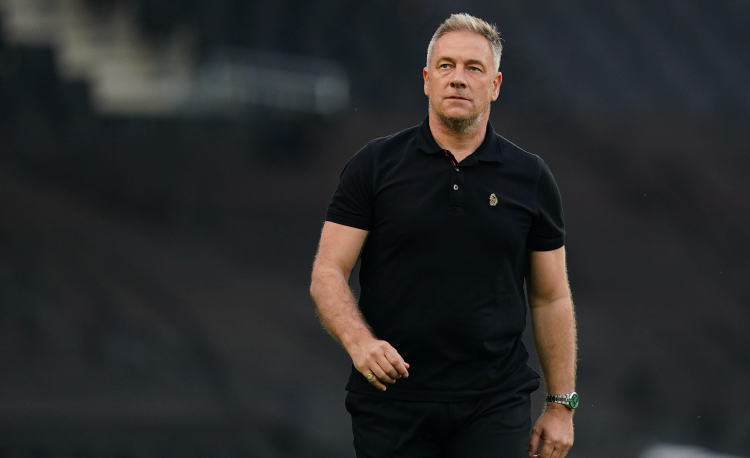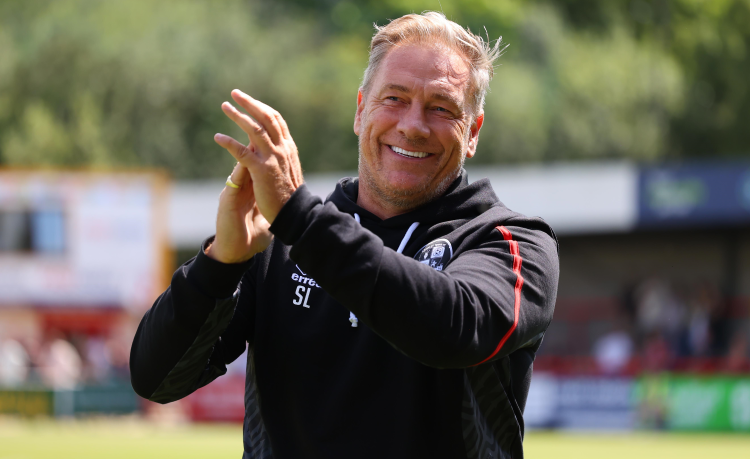You are viewing 1 of your 1 free articles
Attacking combinations
This session looks at three major attacking actions: first, the underlap, second, the overlap and third, what I call a stick pass.
| Area | Up to full pitch |
| Equipment |
2 full size goals, 10 mannequins, cones |
| No. of Players | Minimum 10 plus GKs |
| Session Time | At coach’s discretion |
This session looks at three major attacking actions: first, the underlap, where the player who starts with the ball is the one who’s going to do the underlap, playing to the side, then to the middle, and making an underlapping run; second, the overlap, running around the player; and third, what I call a stick pass,
a straighter pass in the final action.
I’d run this on MD-2, when we’re looking at details and the combinations in the attacking third, a vital part of how we play.
Players love this because it’s working in quite a tight area, and it’s quick, fast, one-touch football, moving and timing their runs. They get really engaged with it, because they’ve got to focus on where their runs are. They get used to playing these attacking actions off mannequins, and then when we go into 11v11 or matchday, they want to try and find these actions that we’ve worked on.
ACTIVITY 1
Set up in a small area, dependent on space and the number of players you’re working with, with five players standing at the markers as indicated. The player with the ball passes to the player directly opposite them [1a], who passes diagonally to the player in the middle.
[1a]
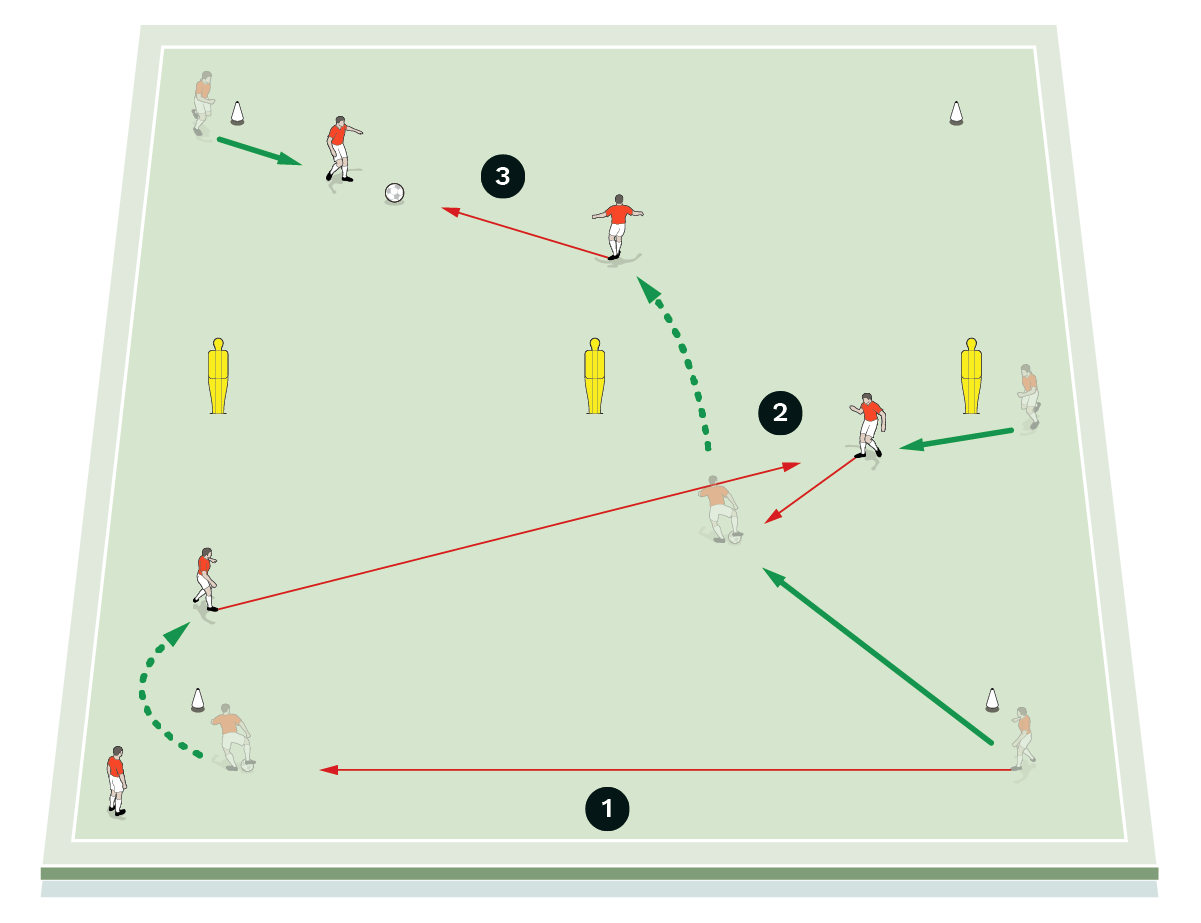
-
Starting player passes to player directly opposite
- Player passes diagonally to player in middle
- Starting player runs into space to receive pass back and dribbles to other end, passing to player there
The first player runs into space to receive the pass back and dribbles towards the other end, passing to the player at the marker there.
That player at the end dribbles back to the other end and plays a pass to the player there, following it through [1b]...
[1b]
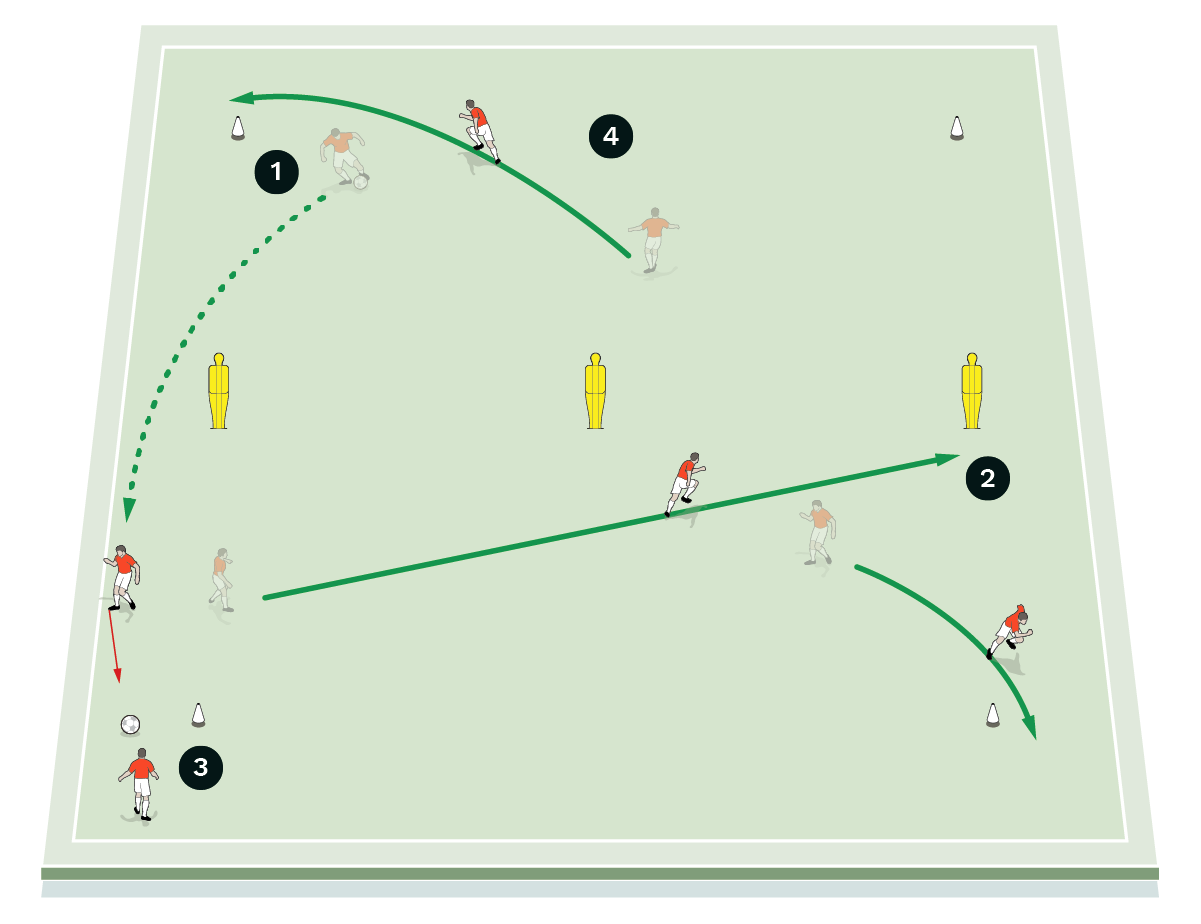
-
Player at end dribbles back towards opposite end, passing to player there
- All other players move to next point on circuit
- Player with ball passes to player at initial starting point
- Activity repeats
...while all the other players move through to the next point on the circuit. The player now with the ball lays it off to the player at the initial starting point. The activity begins again. Run this in the opposite direction as well so players are playing on both sides.
ACTIVITY 2
We set up in exactly the same way. This time, the player with the ball passes to the player directly opposite them [2a]...
[2a]
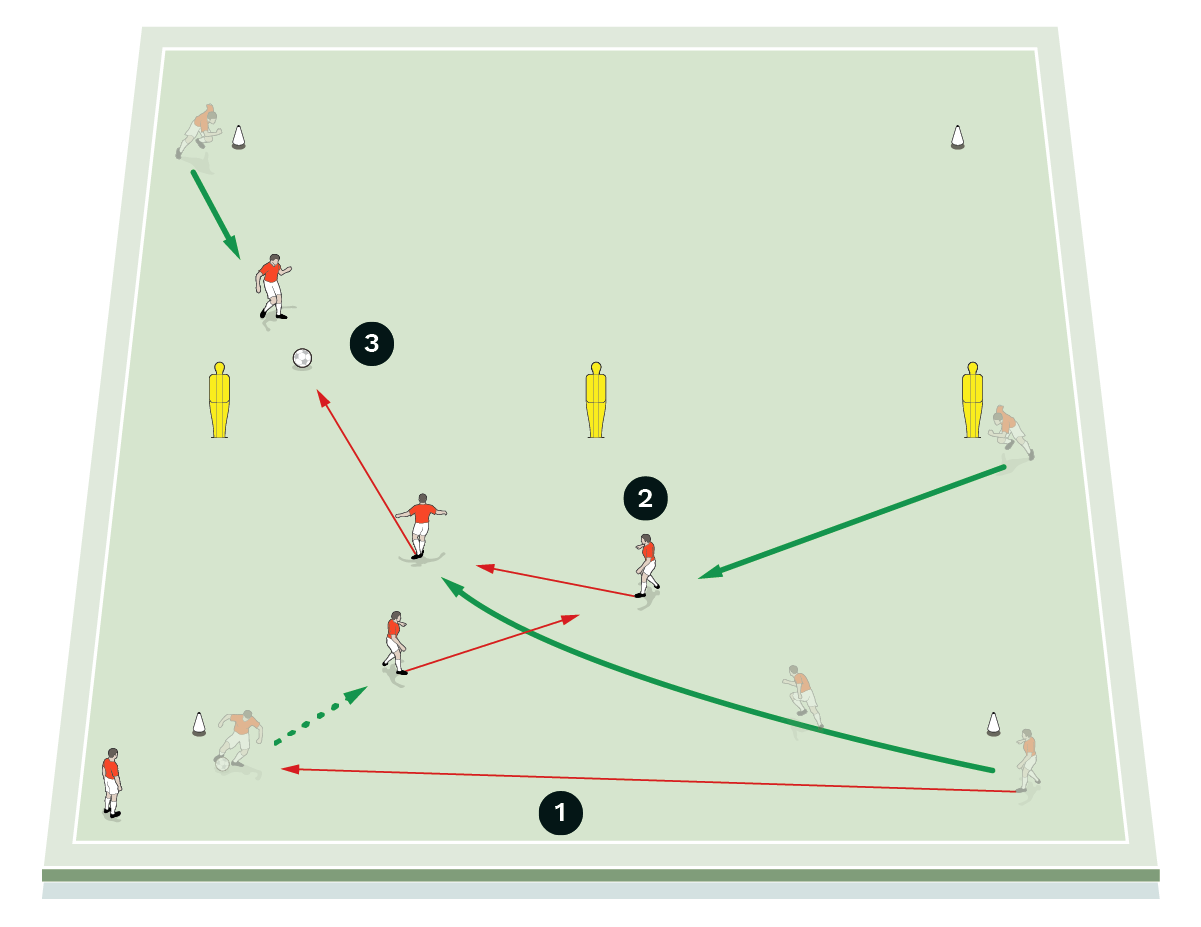
-
Starting player passes to player directly opposite
- Player passes diagonally to player in middle
- Starting player runs into space to receive pass back and plays immediately to player at opposite end
...who passes diagonally to the player in the middle. The first player runs into space to receive the pass back and now plays it immediately to the player at the opposite end marker. That player at the end dribbles back to the middle and plays a pass to the player they are facing, following it through [2b]...
[2b]
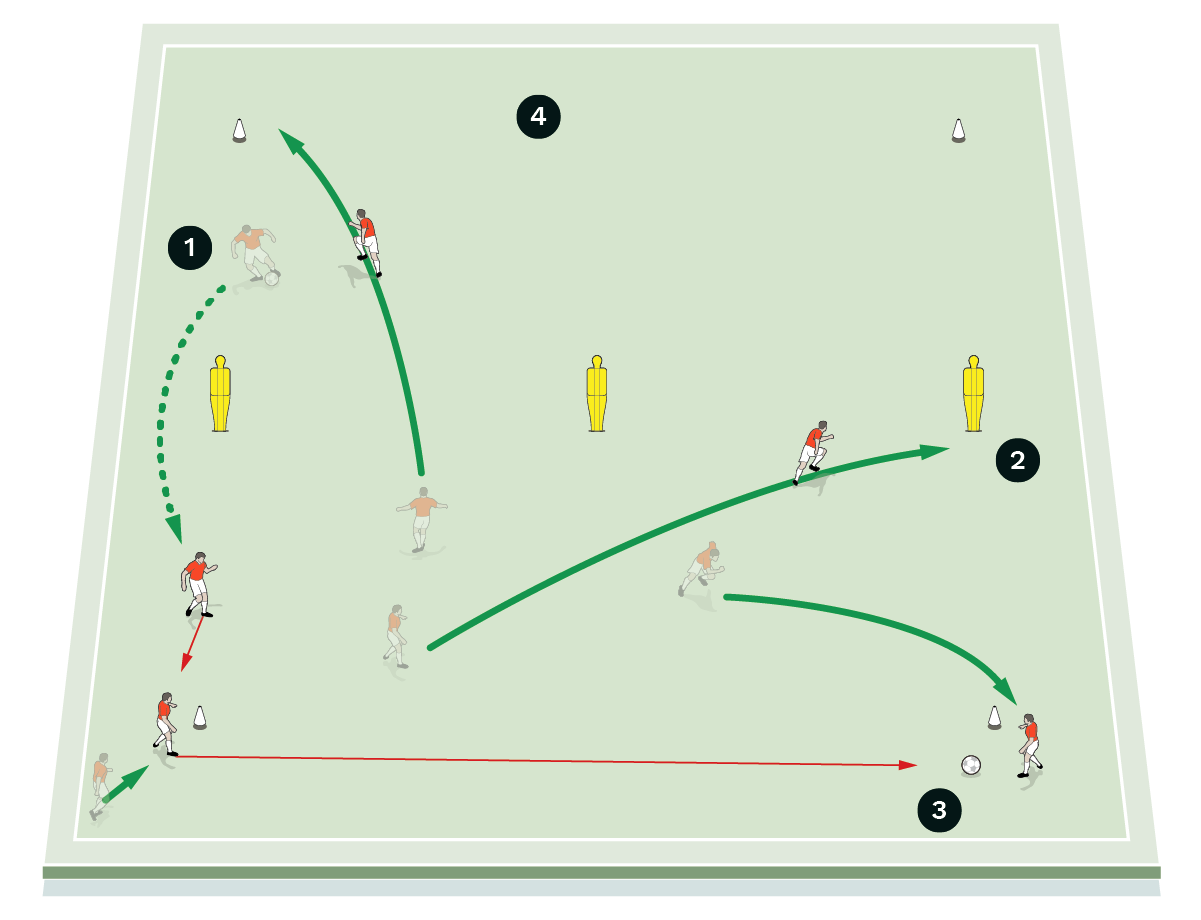
-
Player at end dribbles back to middle and plays to player they are facing and follows pass
- All other players move to next point on circuit
- Player with the ball passes to player at initial starting point
- Activity repeats
...while all the other players move through to the next point on the circuit. The player now with the ball lays it off to the player at the initial starting point. The activity begins again. Of course, once again, you need to also run this in the opposite direction.
“Players get really engaged with this session because they have got to focus on where their runs are”
ACTIVITY 3
We set up similarly, but this time the player in the middle is directly in the centre rather than on the side. The player with the ball passes to the player directly opposite them [3a]...
[3a]
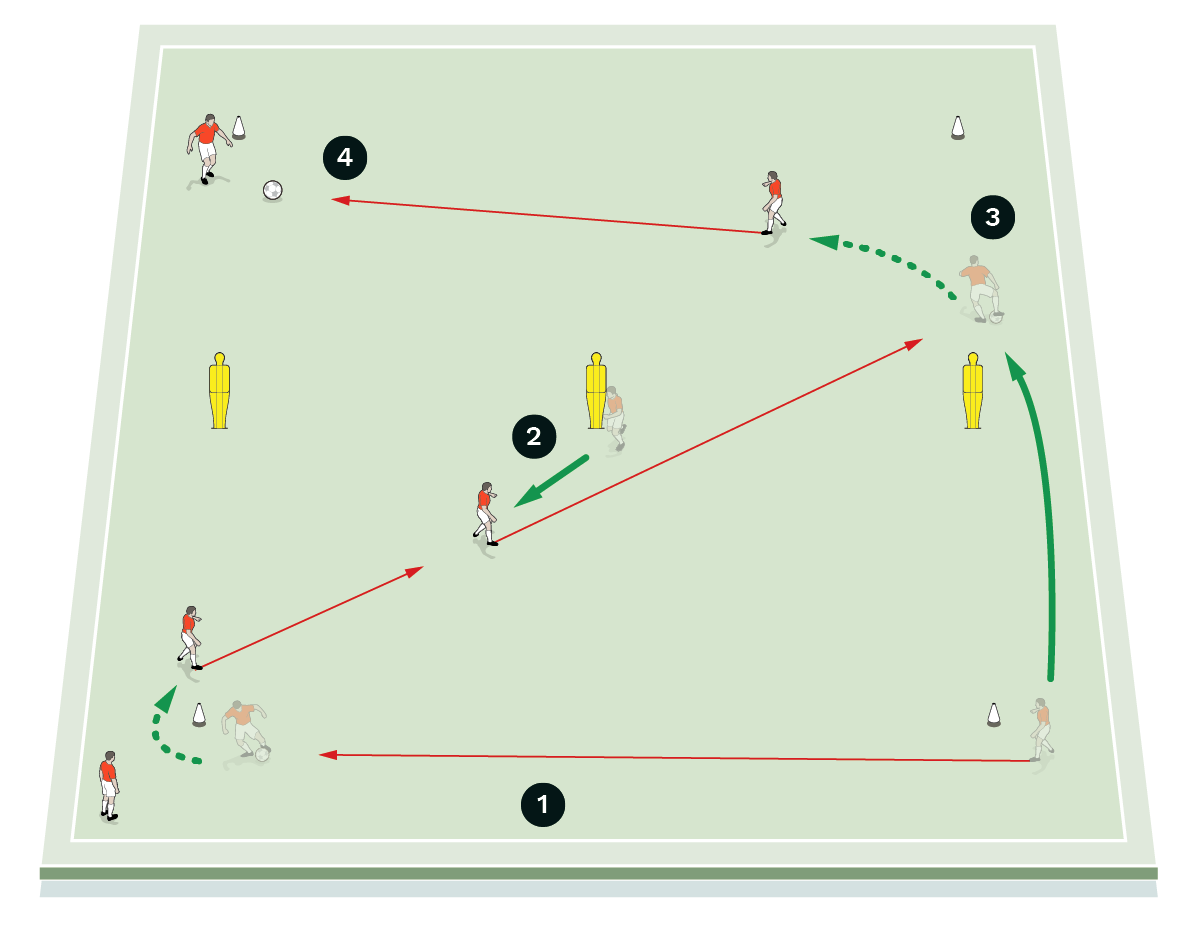
-
Starting player passes to player directly opposite
- Player passes to player in centre
- Starting player runs into space up the wing to receive ball
- They dribble forward and pass to player at far end
...who passes diagonally to the player in the centre. The first player runs into space up the wing to receive the pass back and dribbles before passing to the player at the opposite end there. The player at the end dribbles back up the wing to the middle and plays a pass to the player they are facing, following it through [3b]...
[3b]
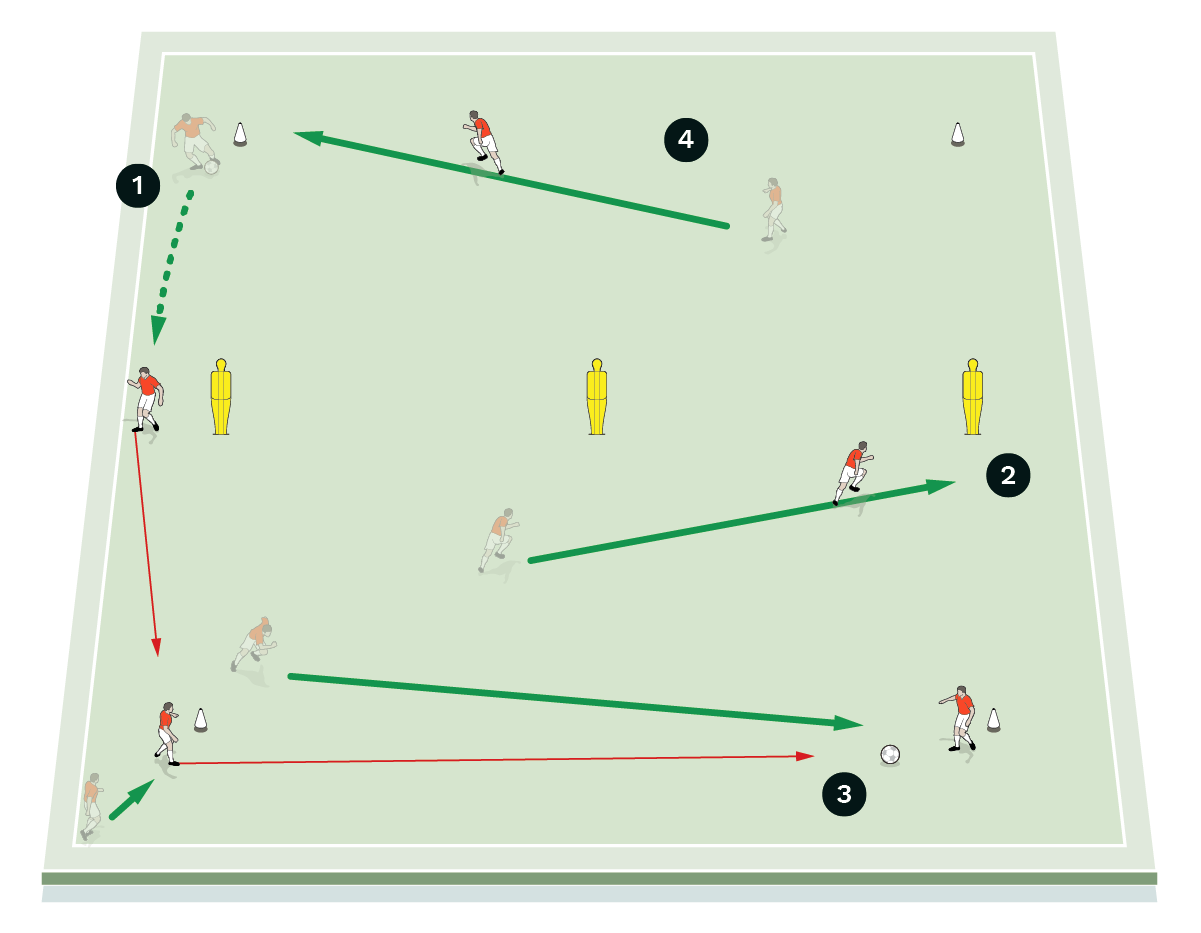
-
Player at far end dribbles up the wing to middle, plays pass to player they are facing
- All other players move to next point on circuit
- Player with ball passes to player at initial starting point
- Activity repeats
...while all the other players move through to the next point on the circuit. The player now with the ball lays it off to the player at the initial starting point. The activity begins again. Again, run it on the opposite side as well.
“When we get in the final third, ball speed must go up, it must be a different gear”
ACTIVITY 4
We then put this all into practice on a full pitch, with mannequins indicating the opposition, with one team building attacking waves, and the other team resting [4].
[4]
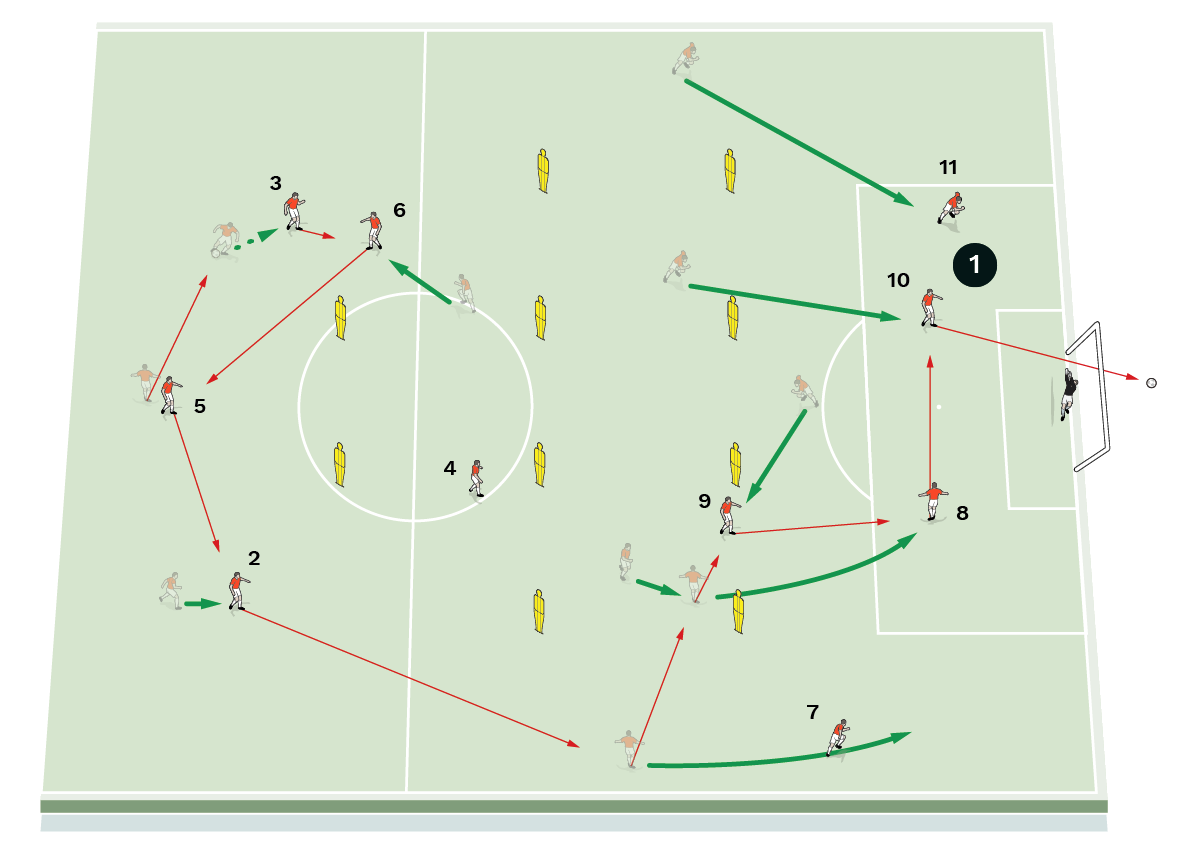
-
Red team build an attacking wave
You could progress it by setting up an 11v11 game.
COACHING POINTS
What are the key things to look out for?
What I tell the players is don’t force yourself to look for these actions all the time. It might take a while before you see it. I ask my players to be a little bit more realistic and be patient before they find the actions we’ve worked on. Sometimes when you work on something, players just want to do it, but it might not be relevant, so they’ve got to wait until the action’s right.
When we get in the final third, ball speed must go up. It must be a different gear. We’re now up against a defensive block, so ball speed must go up. We’re also looking for timing of movement, weight of pass and decision-making.
What are the typical mistakes players might make and how do I avoid them?
As before, players might try and force an action because we’ve worked on it, even though it might not be on, so sometimes they need a little more patience.
It might surprise you, but sometimes because we work so hard on the combination play in the final third, players forget to actually put the ball in the net at the end! They need to be reminded of the reason we have worked so hard to get the ball to this area – to put the ball in the net and see it ripple.
Related Files
Editor's Picks
Deep runs in the final third
Using the goalkeeper in build-up play
Pressing principles
Intensive boxes drill with goals
Penetrating the final third
Creating and finishing
My philosophy
Pressing initiation
Compact team movement
Coaches' Testimonials

Alan Pardew

Arsène Wenger

Brendan Rodgers

Carlos Carvalhal

José Mourinho

Jürgen Klopp

Pep Guardiola

Roy Hodgson

Sir Alex Ferguson

Steven Gerrard
Coaches' Testimonials

Gerald Kearney, Downtown Las Vegas Soccer Club

Paul Butler, Florida, USA

Rick Shields, Springboro, USA

Tony Green, Pierrefonds Titans, Quebec, Canada
Join the world's leading coaches and managers and discover for yourself one of the best kept secrets in coaching. No other training tool on the planet is written or read by the calibre of names you’ll find in Elite Soccer.
In a recent survey 92% of subscribers said Elite Soccer makes them more confident, 89% said it makes them a more effective coach and 91% said it makes them more inspired.
Get Monthly Inspiration
All the latest techniques and approaches
Since 2010 Elite Soccer has given subscribers exclusive insight into the training ground practices of the world’s best coaches. Published in partnership with the League Managers Association we have unparalleled access to the leading lights in the English leagues, as well as a host of international managers.
Elite Soccer exclusively features sessions written by the coaches themselves. There are no observed sessions and no sessions “in the style of”, just first-hand advice delivered direct to you from the coach.
